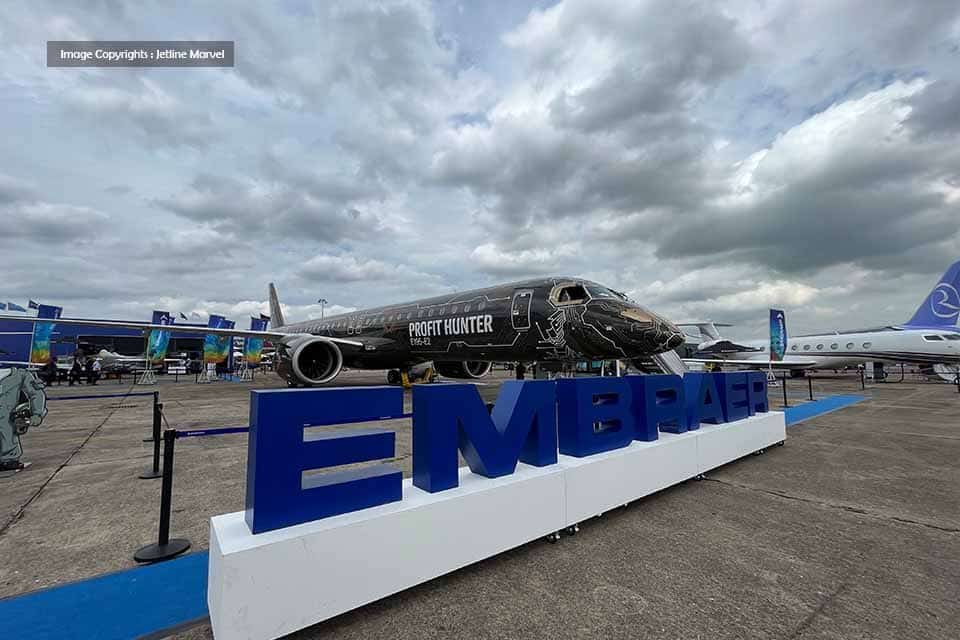Aviation
Embraer to Receive $150 Million from Boeing After Scrapping 2020 Merger Deal

Boeing will pay Embraer a settlement of $150 million, closing a lengthy arbitration process that stemmed from the U.S. aerospace giant’s decision to walk away from a $4.2 billion commercial aviation tie-up in 2020.
The deal, which was meant to see boeing new aircraft acquire 80% of Embraer’s commercial aircraft division, fell through at the height of the COVID-19 pandemic. Boeing attributed the collapse to Embraer’s failure to meet the closure conditions, while Embraer argued Boeing’s own financial difficulties caused the breakdown.
Two Russian Schoolboys Arrested for Destroying Mi-8T Helicopter
The arbitration dispute has since weighed heavily on Embraer, with the company pausing several key projects, including the spin-off of its commercial aircraft business, which includes popular models like the E175 and the newer E2 jets.
Despite the long-awaited settlement, Embraer’s stock price dropped by 4.5%, signaling that investors were still unsettled by the prolonged fallout of the failed partnership.
A Costly Mistake: Passenger Pays for Fuel After Disruptive Flight
In its official statement, Embraer described the settlement as a “white-knuckle agreement,” suggesting that both companies had to navigate a complex and tense negotiation process to reach this resolution.
Boeing, in a separate statement, confirmed that an agreement had been reached, though it did not disclose the financial details. Despite the settlement, the termination of the deal in 2020 had far-reaching effects for both companies, with Embraer forced to halt various developments and undertake a complex internal restructuring of its commercial aviation division.

Aviation
China Eastern Receives Its Ninth C919 Aircraft, Marking a New Milestone

China Eastern Airlines (CEA) has reached a significant milestone with the delivery of its ninth COMAC C919 aircraft, continuing its lead as the launch customer for China’s domestic narrow-body airliner.
On Thursday, the airline received the latest addition to its fleet, registered as B-657T, marking another step in China’s ambitious efforts to establish itself as a key player in the global aerospace market.
Virgin Australia Launches Black Friday Sale on Flights Worldwide
This delivery is part of a major achievement for COMAC (Commercial Aircraft Corporation of China), which has now delivered a total of 10 comac c919 in 2024 alone, a remarkable increase from just three jets delivered by the end of 2023.
The C919 program represents China’s entry into the competitive market for commercial aircraft, aiming to rival the dominance of manufacturers like Airbus and Boeing in the narrow-body sector.
These 6 Airlines Are Giving You Free Wi-Fi on Your 2025 Flights
One standout feature of the c919 is its innovative in-flight technology, particularly its Wi-Fi system. Developed by the China Electronics Technology Group Corporation (CETC), this system allows passengers to connect to the “CEAIR-WIFI” wireless hotspot, providing seamless access to in-flight entertainment.
Through the website www.muflyer.com, travelers can enjoy a range of features including “Air Cinema” and “Air Games,” which enhance the flying experience.
Looking ahead, COMAC’s ambitions are not limited to narrow-body aircraft. At the 15th China International Aviation and Aerospace Exhibition in Zhuhai, c919 aircraft price made waves with the announcement of over 100 new aircraft orders.
A significant highlight was a high-profile agreement with Air China for the development of the C929, a widebody aircraft set to compete c919 vs a320 and c919 vs 737 with these models.
-

 Aviation2 months ago
Aviation2 months agoMicrosoft Flight Simulator Raises $3 Million to Bring Back the An-225 Mriya
-

 Airlines2 months ago
Airlines2 months agoQatar Citizens Can Travel to the United States Without a Visa
-

 Aviation2 months ago
Aviation2 months agoQatar Airways bans these new Electronic Devices on plane
-

 Defence2 months ago
Defence2 months agoWhich Country Has the Largest Fleet of Fighter Aircraft?
-

 Airlines1 week ago
Airlines1 week agoDAMAC Air: Dubai’s New Luxury Airline Offers Free Flights for Registration
-

 Airport2 months ago
Airport2 months agoWestern Sydney Airport Welcomes Its First Plane After 6 Years of construction
-

 Airlines7 days ago
Airlines7 days agoAir India to Launch aircraft maintenance training institute in Bengaluru
-

 Aviation2 months ago
Aviation2 months agoDid you know ? Once Boeing 747 carried 1088 passenger in 1991








